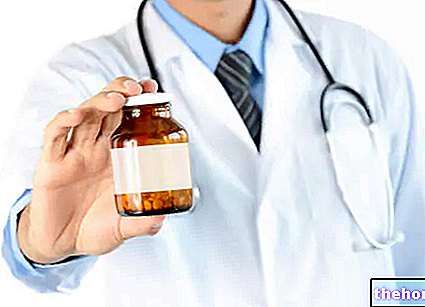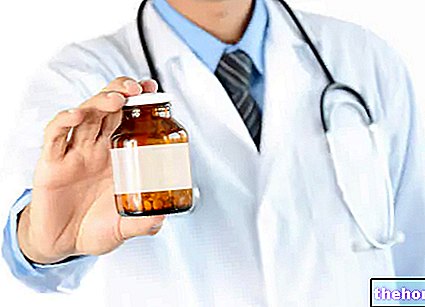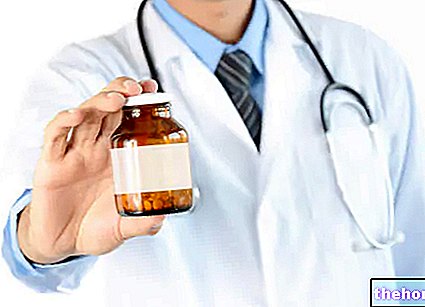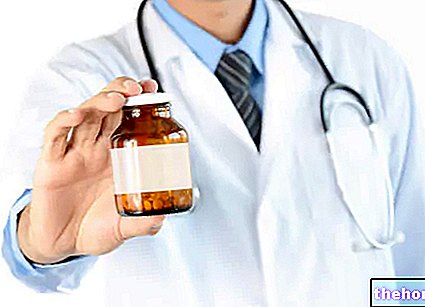Active ingredients: Vitamin C (Ascorbic acid)
CEBION 500 mg chewable tablets
CEBION 1 g effervescent tablets
CEBION 1 g granules
Cebion package inserts are available for pack sizes: - CEBION 500 mg chewable tablets, CEBION 1 g effervescent tablets, CEBION 1 g granules
- CEBION 100 mg / ml oral drops solution 10 ml bottle
Indications Why is Cebion used? What is it for?
WHAT IS IT
Cebion is vitamin C.
WHY IT IS USED
Cebion is used for vitamin C deficiency states.
Contraindications When Cebion should not be used
Hypersensitivity to components or other closely related substances from a chemical point of view.
What to do during pregnancy and breastfeeding
Ask your doctor for advice.
Precautions for use What you need to know before taking Cebion
Vitamin C should be used with caution by people who suffer, or have suffered in the past, from nephrolithiasis (kidney stones) and by those with G6PD (glucose-6-phosphate dehydrogenase) deficiency, hemochromatosis, thalassemia or sideroblastic anemia.
Those who suffer from diabetes or who follow low-calorie diets should take into account that the 1 g lemon and orange effervescent tablets and orange granules contain approximately 810 and 7950 mg respectively of sucrose. For these subjects it is recommended to take Cebion sweetened with sorbitol, which does not contain glucose and is therefore easier to handle.
Subjects who follow a low sodium diet should take into account that Cebion chewable tablets contain about 40 mg of sodium corresponding to about 0.1 g of table salt; Cebion effervescent tablets contain approximately 285 mg of sodium corresponding to approximately 0.7 g of table salt.
Interactions Which drugs or foods can modify the effect of Cebion
If you are using other medicines ask your doctor or pharmacist for advice.
Warnings It is important to know that:
Ascorbic acid can interfere, at high doses, with the results of some diagnostic tests, in particular the search for glucose in the urine by non-specific means. It is therefore advisable to stop taking vitamin C a few days before proceeding with this test.
Dose, Method and Time of Administration How to use Cebion: Posology
HOW MUCH
Cebion 500 mg chewable tablets should be taken in a dose of 1-2 tablets per day. In severe cases, where it is necessary to compensate for an intense state of vitamin C deficiency, 2-3 or even more tablets per day.
Cebion 1 g effervescent tablets should be taken in a dose of 1 tablet per day. Adults and children can take one effervescent tablet of Cebion once or several times a day
Cebion granules orange flavor 1 g can be administered one or more times a day for several days in a row.
Warning: do not exceed the indicated doses without medical advice.
WHEN AND FOR HOW LONG
Consult your doctor if the disorder occurs repeatedly or if you have noticed any recent changes in its characteristics.
Warning: use only for short periods of treatment.
LIKE
The chewable tablet can also be dissolved slowly in the mouth or swallowed, after breaking it, with a little water, tea or fruit juice.
The effervescent tablet dissolves in half a glass of water or fruit juice and is drunk immediately after complete dissolution.
Dissolve the contents of one sachet of orange flavor granules in half a glass of water and drink immediately afterwards. To shorten the dissolving time, it is advisable to mix the liquid. With
Granulated Cebion with orange is obtained a particularly pleasant drink.
Overdose What to do if you have taken too much Cebion
In case of accidental ingestion / intake of an excessive dose of Cebion, notify your doctor immediately or go to the nearest hospital.
Administration of very large quantities can occasionally cause slight gastrointestinal disturbances, consisting mainly of laxative phenomena. In such cases, treatment should be discontinued.
Side Effects What are the side effects of Cebion
Hypersensitivity reactions may occur in predisposed subjects.
At higher than recommended dosages, headaches and gastrointestinal upset have been reported.
Compliance with the instructions contained in the package leaflet reduces the risk of undesirable effects.
These side effects are usually transient. When side effects occur, it is advisable to consult your doctor or pharmacist.
It is important to inform your doctor or pharmacist of any undesirable effects not described in the package leaflet.
Request and fill in the Undesirable Effects report form available at the pharmacy (form B).
Expiry and Retention
As far as Cebion effervescent tablets are concerned, the preparation is sensitive to humidity. The cap of the tube contains a desiccant which serves to protect the tablets from humidity that could penetrate them; therefore the package must be carefully closed each time.
Cebion 1 g effervescent tablets: store in the original package at a temperature not exceeding 25 ° C
Cebion 1 g granules: store at a temperature not exceeding 30 ° C
Warning: do not use the medicine after the expiry date indicated on the package which refers to the product in intact packaging, correctly stored.
Keep this medicine out of the reach and sight of children.
It is important to have the medicine information available at all times, so keep both the box and the package leaflet.
Composition and pharmaceutical form
COMPOSITION
Cebion 500 mg chewable tablets Orange flavor: one tablet contains sodium ascorbate (equivalent to 250 mg of ascorbic acid) 281 mg; ascorbic acid (vit. C) 250 mg. Excipients: CD sucrose, glycerol palmitate stearate, sodium cyclamate, magnesium stearate, mandarin flavor, orange flavor, orange yellow S (E 110) - lacquer.
Cebion 500 mg chewable tablets Lemon flavor: one tablet contains sodium ascorbate (equivalent to 250 mg of ascorbic acid) 281 mg; ascorbic acid (vit. C) 250 mg. Excipients: CD sucrose, glycerol palmitate stearate, sodium cyclamate, magnesium stearate, lemon flavor, quinoline yellow (E 104) - lacquer.
Cebion 500 mg chewable tablets Blueberry flavor: one tablet contains sodium ascorbate (equivalent to 250 mg of ascorbic acid) 281 mg; ascorbic acid (vit. C) 250 mg. Excipients: CD sucrose, glycerol palmitate stearate, sodium cyclamate, magnesium stearate, blueberry flavor, indigo carmine (E 132) - lacquer, erythrosine (E 127) - lacquer.
Cebion 1 g Orange flavored effervescent tablets: one tablet contains 1 g ascorbic acid (vit. C). Excipients: tartaric acid, sodium bicarbonate, sodium cyclamate, orange flavoring powder, adipic acid, yellow orange S (E 110), yellow orange S (E 110) - lacquer, sucrose CD, granulated sucrose.
Cebion 1 g lemon flavored effervescent tablets: one tablet contains 1 g ascorbic acid (vit. C). Excipients: tartaric acid, sodium bicarbonate, sodium cyclamate, lemon flavoring powder, adipic acid, quinoline yellow (E 104), quinoline yellow (E 104) - lacquer, sucrose CD, granulated sucrose.
Cebion 1 g Orange flavor granules: one sachet contains 1 g ascorbic acid (vit. C). Excipients: orange granules, freeze-dried orange, citric acid, sucrose.
Cebion 500 mg chewable tablets Sugar-free: one tablet contains sodium ascorbate (equivalent to 320 mg of ascorbic acid) 360 mg; ascorbic acid 180 mg. Excipients: glycerol palmitate stearate, magnesium stearate, sodium cyclamate, forest fruit flavor, erythrosine (E 127) - lacquer, colloidal hydrated silica, sorbitol.
Cebion 1 g sugar-free effervescent tablets: one tablet contains 1 g ascorbic acid. Excipients: coated tartaric acid, sodium bicarbonate, adipic acid, sorbitol, sodium saccharin, sodium cyclamate, cedar flavor powder, quinoline yellow (E 104), colloidal hydrated silica.
HOW IT LOOKS
Cebion comes in the form of chewable tablets or effervescent tablets or granules for oral use.
The contents of the package are:
Cebion 500 mg chewable tablets: 20 Orange flavor tablets
Cebion 500 mg chewable tablets: 20 Lemon flavor tablets
Cebion 500 mg chewable tablets: 20 Blueberry flavor tablets
Source Package Leaflet: AIFA (Italian Medicines Agency). Content published in January 2016. The information present may not be up-to-date.
To have access to the most up-to-date version, it is advisable to access the AIFA (Italian Medicines Agency) website. Disclaimer and useful information.
01.0 NAME OF THE MEDICINAL PRODUCT
CEBION
02.0 QUALITATIVE AND QUANTITATIVE COMPOSITION
03.0 PHARMACEUTICAL FORM
Chewable tablets, effervescent tablets and granules.
04.0 CLINICAL INFORMATION
04.1 Therapeutic indications
Vitamin C deficiency states
04.2 Posology and method of administration
Cebion 500 mg chewable tablets should be taken in a dose of 1-2 tablets per day. In severe cases, in which it is necessary to compensate for an intense state of Vitamin C deficiency, 2-3 or even more tablets per day.
Cebion 1 g effervescent tablets should be taken in a dose of 1 tablet per day. Adults and children can take one effervescent tablet of Cebion once or several times a day.
Cebion granules orange flavor 1 g can be administered one or more times a day for several days in a row.
Warning: do not exceed the indicated doses without medical advice.
04.3 Contraindications
Known individual hypersensitivity to components or other closely related substances from a chemical point of view.
04.4 Special warnings and appropriate precautions for use
Vitamin C should be used with caution by people who suffer, or have suffered in the past, from nephrolithiasis (kidney stones) and by those with G6PD (glucose-6-phosphate dehydrogenase) deficiency, hemochromatosis, thalassemia or sideroblastic anemia.
Those who suffer from diabetes, or who follow low-calorie diets, should take into account that the 1 g effervescent tablets, the lemon and orange flavored effervescent tablets and the orange flavored granules contain approximately 1005, 810 and 7950 mg respectively of sucrose.
For these subjects it is recommended to take Cebion sweetened with sorbitol, which does not contain glucose and therefore more manageable.
Subjects following a low sodium diet should take into account that Cebion chewable tablets contain about 40 mg of sodium corresponding to about 0.1 g of table salt; Cebion effervescent tablets contain approximately 285 mg of sodium corresponding to approximately 0.7 g of table salt.
Ascorbic acid can interfere, at high doses, with the results of some diagnostic tests, in particular the search for glucose in the urine by non-specific means. It is therefore advisable to stop taking vitamin C a few days before proceeding with this test.
04.5 Interactions with other medicinal products and other forms of interaction
If you are using other medicines ask your doctor or pharmacist for advice.
04.6 Pregnancy and lactation
Ask your doctor for advice.
04.7 Effects on ability to drive and use machines
Nobody.
04.8 Undesirable effects
Hypersensitivity reactions may occur in predisposed subjects.
At higher than recommended dosages, headaches and gastrointestinal upset have been reported.
04.9 Overdose
In case of accidental ingestion / intake of an excessive dose of Cebion, notify your doctor immediately or go to the nearest hospital.
Administration of very large quantities can occasionally cause slight gastrointestinal disturbances, consisting mainly of laxative-type phenomena. In such cases, treatment should be discontinued.
05.0 PHARMACOLOGICAL PROPERTIES
05.1 Pharmacodynamic properties
Ascorbic acid (together with its reduced form) constitutes an efficient cellular redox system of fundamental importance for numerous biochemical reactions.
The elective uses of vitamin C in therapy are the manifestations due to secondary deficiency with reduced dietary intake (low content in certain foods or in certain restricted diets, destruction during cooking, etc.) or to an increased need (breastfeeding, development, diseases infectious) or reduced absorption (gastroenteritis, colitis, malabsorption syndromes).
Currently, however, cases of deficiency with overt symptoms (scurvy) are rare, while sub-deficiency situations with nuanced or partial clinical manifestations (eg capillary fragility, etc.) are the norm.
05.2 Pharmacokinetic properties
When administered orally, ascorbic acid is rapidly absorbed from the intestine through an energy-dependent process which is saturable in a dose-dependent manner. Absorption of dietary ascorbate is practically complete.
Under physiological conditions, oral administration of 60 mg per day induces a plasma concentration of about 0.8 mg / dL and a body content of about 1500 mg; if the intake reaches 200 mg daily, the plasma concentration rises to 1.5 mg / dL while the body content tends to reach 2500 mg.
The renal threshold of ascorbic acid is approximately 1.5 mg / dL. Excess ascorbic acid is rapidly eliminated mainly in the urine in unchanged form or as dehydroascorbic acid and in the form of metabolites such as 2,3 diketogulonic acid and oxalic acid. Its elimination is usually accompanied by mild diuresis. There are therefore no risks of accumulation.
It is distributed in all tissues, in particular in the liver, in the adrenal cortex, in the pituitary.
05.3 Preclinical safety data
There is no specific documentation on acute toxicity in the literature.
Studies on chronic toxicity indicate that ascorbic acid is well tolerated in animals; in rats, for example, treated with doses of 6.4 g / kg for six weeks and 2 g / kg for two years, there was no evidence of weight changes. , mortality as well as haematological, clinical and histological parameters checked repeatedly.
The addition of ascorbic acid to cells in vitro can lead to an increase in mutagenesis. The phenomenon is not feasible in vivo, whereas ascorbic acid, on the contrary, exerts a marked protective effect on DNA and on the systems related to it.
06.0 PHARMACEUTICAL INFORMATION
06.1 Excipients
06.2 Incompatibility
None known
06.3 Period of validity
06.4 Special precautions for storage
The effervescent tablets are sensitive to moisture.The cap of the tube contains a desiccant which serves to protect the tablets from moisture that could penetrate them; therefore the package must be carefully closed each time.
Cebion 1 g granules: store at a temperature not exceeding 30 ° C
Cebion 1 g effervescent tablets: store in the original package at a temperature not exceeding 25 ° C; Validity after first opening: 90 days
06.5 Nature of the immediate packaging and contents of the package
• Moplen tube with tablets wrapped in coupled paper-aluminum, closed with a polyethylene cap fitted with a dehydrating cell.
- 1 g effervescent tablets
10 lemon flavored tablets
- 1 g effervescent tablets
10 orange flavor tablets
- 1 g effervescent tablets
10 sugar-free tablets
• Bags of triple coupled plastic-aluminum-paper material
- 1 g Granules
10 orange flavor sachets
• Carton containing 2 amber blisters of triplex PVC / PVDC / Al from
10 tablets
- 500 mg chewable tablets
20 lemon flavored tablets
- 500 mg chewable tablets
20 orange flavor tablets
- 500 mg chewable tablets
20 blueberry flavored tablets
- 500 mg chewable tablets
20 sugar-free tablets
06.6 Instructions for use and handling
The tablet chewable it can also be dissolved slowly in the mouth or swallowed, after breaking them, with a little water, tea or fruit juice.
The tablet effervescent it dissolves in half a glass of water or fruit juice and is drunk immediately after complete dissolution.
Dissolve the contents of one sachet of granulated orange taste in half a glass of water and drink immediately afterwards. To shorten the dissolving time, it is advisable to mix the liquid. A particularly pleasant drink is obtained with Cebion granules with orange.
07.0 MARKETING AUTHORIZATION HOLDER
BRACCO s.p.a.
Via E. Folli, 50 - MILAN
08.0 MARKETING AUTHORIZATION NUMBER
500 mg chewable tablets 20 tablets Sugar-free - A.I.C. 003366198
1 g granules 10 sachets orange flavor - A.I.C. 003366111
500 mg tablet chewable 20 tablets lemon flavor - A.I.C. 003366147
500 mg tablet chewable 20 tablets orange flavor - A.I.C. 003366150
1 g tablet effervescent, 10 tablets orange flavor - A.I.C. 003366162
1 g tablet effervescent, 10 tablets lemon flavor - A.I.C. 003366174
500 mg chewable tablets, 20 tablets blueberry flavor - A.I.C. 003366186
1g cpr. effervescent, 10 tablets sugar free - A.I.C. 003366200
09.0 DATE OF FIRST AUTHORIZATION OR RENEWAL OF THE AUTHORIZATION
March 1959 / June 2010
10.0 DATE OF REVISION OF THE TEXT
May 2014























-nelle-carni-di-maiale.jpg)




